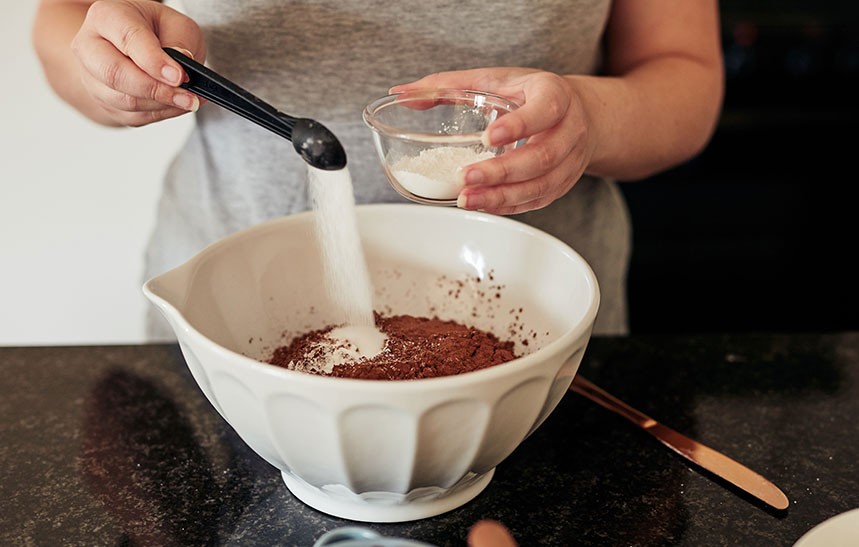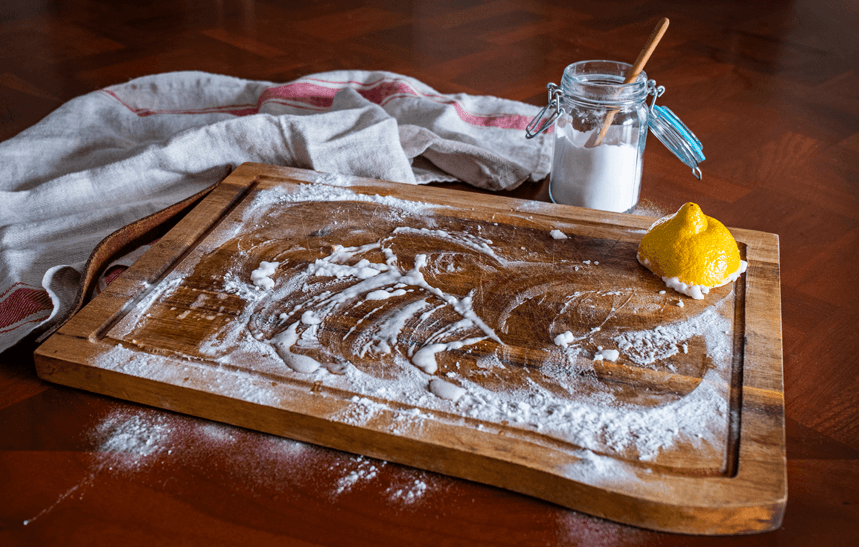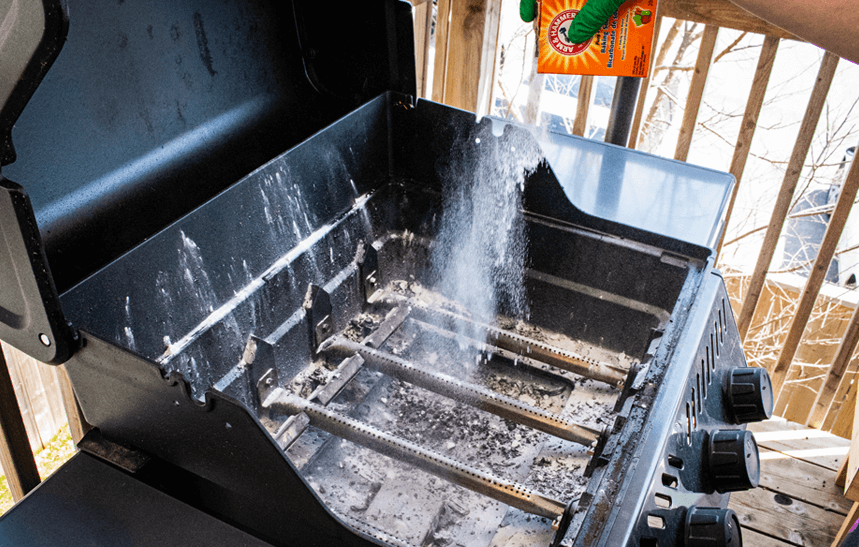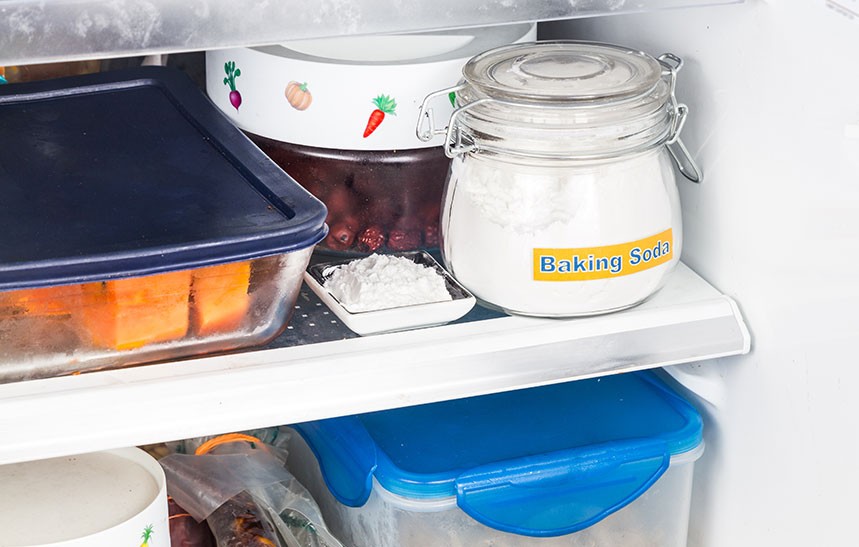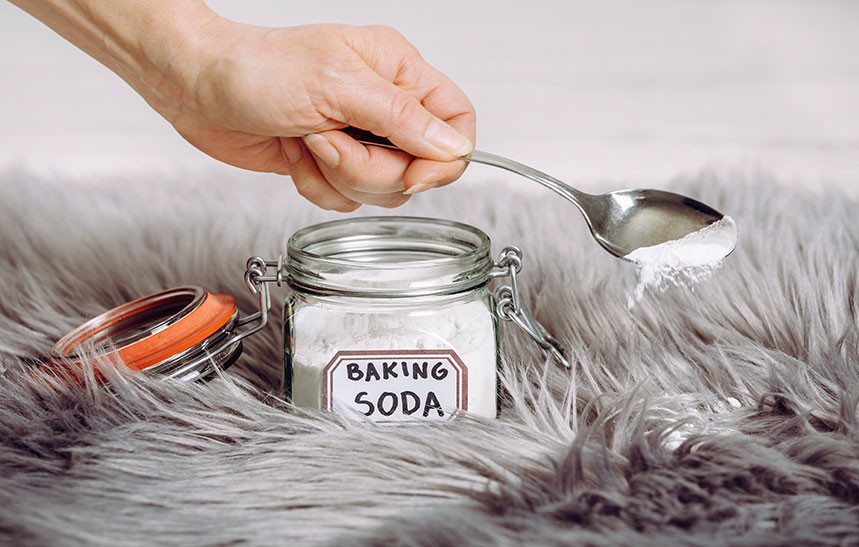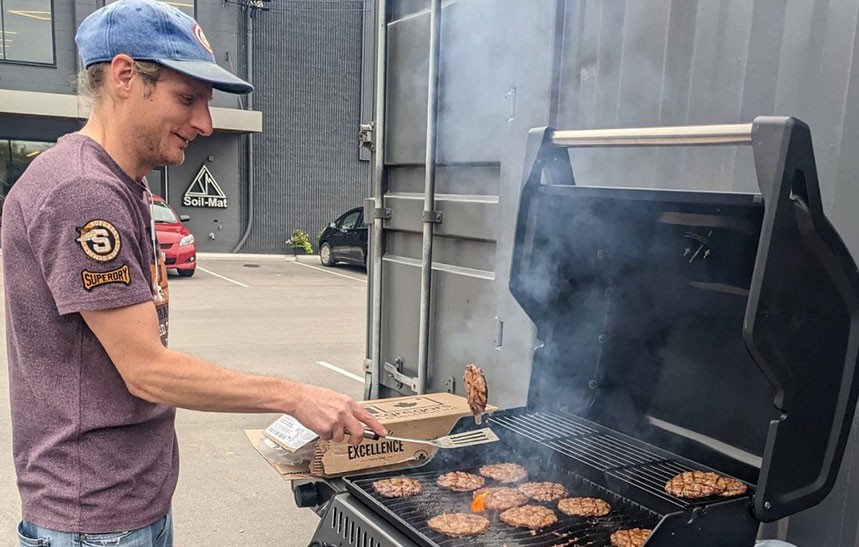
The Many Uses of Baking Soda in Your Kitchen and Barbecue
A wonder for the whole house may be lounging in your pantry. Do you have a box or tin of baking soda? It has many uses, from making your baked goods light and fluffy faster than using fermentation-raising techniques to cleaning and deodorizing. The uses of baking soda are many and varied. Here are some of the best and easiest uses for baking soda in your kitchen and on the barbecue.
What is Baking Soda
Baking soda is a dry chemical levener. That means that when used in baking or cooking, a chemical reaction takes place when it is used. Baking soda is added to your dry ingredients, then, when the wet ingredients are added the acidity in the wet reacts with the base in the baking soda. This creates carbon dioxide bubbles, lift, and lightness, in your baked goods. The other ingredients in the batter form protein bonds and create structure around these bubbles. Those are the little holes that you see in your breads, muffins, and cakes.
Where Does Baking Soda Come From?
Baking soda comes from natural minerals, the largest deposits of the minerals that make baking soda are located in Wyoming, Mexico, Colorado, and Turkey. Trona is the mined mineral that forms baking soda. It is refined into soda ash, then dissolved in a solution that has bubbles of carbon dioxide forced through it. Bicarbonate of soda, baking soda, is the insoluble solid that precipitates out of that.
Another type of mineral that produces baking soda is called Nahcolite. It naturally occurs and is free from any additives. Carbon dioxide reacts with trona in evaporated lakes, which is then mined and distributed.
Uses for Baking Soda on the Barbecue & Around the Kitchen
While we know that baking soda, and as an extension baking powder, is integral to giving baked goods a fluffy and soft texture, but did you know that baking soda is a powerhouse when it comes to … well your whole house? Here are some of the best uses and why’s for baking soda in your kitchen and on your barbecue.
Cleaning
Let’s start indoors. Because baking soda is a base, which means that its pH level is higher than 7. When baking soda comes into contact with an acidic substance it bubbles and foams. The fine grain is a very mild abrasive that is also absorbent, which is great when it comes to fighting grease. This is why baking soda is so good for cleaning.
Clean Almost any Kitchen Surface
In and around the kitchen you can use baking soda and a sponge to clean just about every surface to great effect. A damp sponge with baking soda on it can be used to scrub stubborn spots or greasy messes with few exceptions.
-
Clean your fruit and vegetables with baking soda. Modern farming can leave a lot of different residues on your produce and many hands may have touched them as well. Clean your fruits and veggies by soaking them in a solution of 1 tsp. of baking soda to every 2 cups (473 ml) of water for about 15 minutes to remove most harmful things on the outside. You can also make a paste of baking soda and water to scrub the skins and rinds of any produce that has skin you eat.
-
Sprinkle baking soda on your cutting board and use that instead of table salt to clean and deodorize your cutting board.
-
Pots and pans that have been scorched inside or out can be cleaned by sprinkling the afflicted surface with baking soda. On the inside, add water and bring to a boil, then, add some dish soap and scrub off the buildup. On the outside sprinkle with baking soda and add dish soap. Make a paste. Let it sit for a bit, then use a scouring pad to scrub.
-
Be judicious and test an inconspicuous spot before going for it, but you can use baking soda to scrub countertops, appliances, and walls. Stainless steel surfaces can scratch when baking soda is used to clean them, check your manual or a small area that won’t be seen before attempting this.
-
You can use baking soda to clean the interior of your fridge and microwave. Remember to rinse surfaces that have been cleaned with a clean and damp sponge to remove residue after.
-
If you have an older dishwasher or have a load of particularly greasy dishes after a great barbecue dinner, sprinkle a little baking soda in the bottom of the dishwasher or add a sprinkle to your dishwater.
-
To clean your dishwasher, you can add up to 2 cups (544 g) of baking soda into the bottom of your unit and place a bowl of vinegar in the top rack. Use the hottest cycle for a sparkling dishwasher. Always check your manufacturer’s manual before doing this.
-
Use baking soda to clean your oven by making a thick paste with baking soda and water with a little dish soap. Spread that paste on every surface of a cold oven. Spray with vinegar and then let it sit for about an hour. Wipe your oven clean with warm water and a soft cloth. This may take a few passes if your oven is particularly dirty.
-
Deodorize your kitchen sponge by soaking it in hot water and baking soda. This can extend the life of your kitchen sponge; however, kitchen sponges should be changed out every two to three weeks for sanitary reasons.
-
If you have a mild clog, not a full backup but a slow drain, using 1 cup (272 g) of baking soda and 1 cup (237 ml) of vinegar will clean things out and deodorize your drain. If you have a full-on clog, it is highly recommended that you call a professional to come and have a look.
-
Plastic containers like Tupperware can stain and smell. Remove those with ¼ cup (68 g) soda to 4 cups (946 ml) water, which will also remove lingering odors.
Baking Soda can Clean Up Outdoors Too
When it comes to cleaning your barbecue baking soda is not ideal for the exterior. It can scratch the finish on your stainless steel or cause staining if left or not rinsed away properly. We, at Napoleon, suggest using dish soap, warm water, and a soft cloth for the outside of your barbecue to clean off any greasy messes. Follow that with an oil-based polish or baby oil to ensure a fingerprint-resistant and shiny finish. For really tough greasy messes on the outside of your barbecue, you can use an acidic stainless steel cleaner and a soft cloth followed by a polish.
Inside your barbecue is a different story. The burners and sear plates, the tub, and grids are built to withstand high temperatures and loads of stress. You can clean the inside of your barbecue easily with the help of baking soda. Remove your cooking grids and sear plates, sprinkle baking soda throughout your grill’s interior, and then spray with a vinegar-water mixture.
Wait for 5 to 15 minutes or so while the baking soda foams up to help break down any built-up grease. Using a putty knife (preferably plastic), scrape the built-up grease and debris from the inside of the grill into the drip tray of the grill (Not the removable/replaceable drip pan). Then use a nylon bristled brush and a bucket of hot water with dish soap to scrub down the interior of the grill.
As for sear plates and cooking grids, a sprinkle of baking soda in the soapy water will give a little added boost to powering off anything on there. Just remember to re-season your cast iron cooking grids as soon as they are fully dry. This is NOT recommended for unseasoned cast iron. Learn how to season your cast iron cooking grids, both for first-time use and as part of regular barbecue maintenance.
Give your outdoor furniture a refresh with baking soda too. Scrub with hot water and baking soda before you store furniture or pull it out for the season to keep things looking fresh.
Baking Soda Storage & Care
Your environment plays a huge roll in how long your baking soda lasts. Moisture is the biggest cause of issue. To prevent problems and ensure longevity, keep your baking soda in airtight containers unless you are using it to deodorize, like in the fridge.
Unsure on freshness? Easily test your baking soda’s viability by putting some in a dish and adding a couple drops of acid, like vinegar. If it bubbles up, it’s still good!
Managing Odours
This is because smell is generated by acidic reactions like sour milk or base reactions like rotting fish. They are both caused by the process of decomposition. Baking soda being a base will react with the stink by bringing the offending substance closer to neutral by raising or lowering the acidity.
-
Sprinkle baking soda under and in your garbage bag in the kitchen to keep things fresh.
-
Leave an open box of soda in your fridge and freezer to absorb smell.
-
Sprinkle baking soda onto soft surfaces and leave it to sit for around 15 minutes before vacuuming up. These surfaces include carpet, floor mats, pet beds, sofas, and drapery.
-
When cutting fragrant vegetables, the scent can linger on your fingers. Make a paste with baking soda and water and rub it into your hands, then wash as normal with soap and water to remove onion and garlic scent from your digits.
Bonus Round
Did you know that baking soda can react without the addition of an acid? In temperatures that exceed 122°F (50°C) that lovely bubbling action that creates carbon dioxide will occur. How does this help you? Easy! Small grease fires, like when you get a flare-up on your barbecue, can be easily put out by baking soda. Save yourself money and use spent, odor baking soda from your fridge or freezer instead of your still fresh baking soda. It will work just as well. Using baking soda on small grease fires works because the baking soda, when heated, will create carbon dioxide that will choke the oxygen that is feeding the fire.
Iced tea, sun tea, can taste so much better when you add a pinch of baking soda before you chill it. Doing so will tame the tannins for a smoother taste while clarifying the color of the tea you are brewing. The next time you are making iced tea, try this trick to prevent a cloudy brew.
Always have a Class B fire extinguisher in an easy to access place near your barbecue and in your kitchen for emergencies.
Do you Have any Baking Soda Hacks to Share?
Baking soda has many uses in both the kitchen and on the barbecue, it can be so helpful around the house as a whole. How many more uses do you know of? Are they just in the kitchen and your yard, or are they for other places around the house too? Share your baking soda hacks with us on our social pages like Facebook and Tiktok using the hashtags #NapoleonMoments and #NapoleonGrills.
Show us what you are grilling
Join the #NapoleonEats Community on Social
